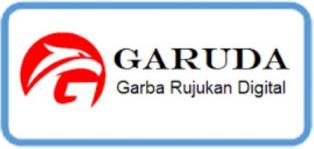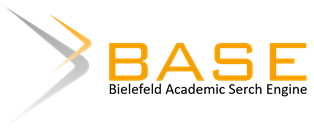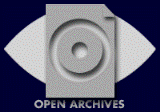Meta-Analisis: Pengaruh Blended Learning terhadap Peningkatan Hasil Pembelajaran
 ), Agung Setiawan(2), Ambiyar Ambiyar(3), Muhammad Giatman(4), Wakhinuddin Simatupang(5), Nurhasan Syah(6),
), Agung Setiawan(2), Ambiyar Ambiyar(3), Muhammad Giatman(4), Wakhinuddin Simatupang(5), Nurhasan Syah(6), (1) Universitas Negeri Padang
(2) STKIP ROKANIA
(3) Universitas Negeri Padang
(4) Universitas Negeri Padang
(5) Universitas Negeri Padang
(6) Universitas Negeri Padang
 Corresponding Author
Corresponding Author
DOI : https://doi.org/10.24036/voteteknika.v10i2.118134
Full Text:
 Language : id
Language : id
Abstract
Penelitian ini bertujuan untuk mendeskripsikan dampak penggunaan teknologi terhadap hasil belajar melalui meta-analisis. Artikel ini membahas pengaruh pencapaian blended learning, dianalisis secara kuantitatif, mendeskripsikan data berupa ukuran sampel, mean dan standar deviasi dan dipublikasikan dalam jurnal yang terindeks Google Scholar. Desain analisis menggunakan analisis kontras kelompok dengan model efek acak yang ukuran efeknya dikoreksi. Analisis menggunakan perangkat lunak JASP untuk menghitung selisih rata-rata, Forrest plot, dan bias publikasi. Hasil analisis menunjukkan bahwa nilai I2 = 99,823, confidence 0,95% dan summary effect 8,24 antara 3,39 hingga 13,09, terdapat perbedaan yang signifikan antara kelompok yang menggunakan blended learning dan konvensional. Dalam proses belajar kelompok, siswa yang menggunakan blended in learning memiliki hasil belajar yang lebih baik daripada yang tidak menggunakan blended. Berdasarkan hasil analisis, sangat jelas urgensi penerapan blended dalam mendukung proses pembelajaran.
Kata Kunci: Blended Learning, Hasil Belajar, Abad 21, Era Industri 4.0
This study aims to describe the impact of using technology on learning outcomes through meta-analysis. This article discusses the effect of blended learning achievement, analyzed quantitatively, described the data in the form of sample size, mean and standard deviation and published in a journal indexed on Google Scholar. The analysis design used group contrasts analysis with a random effects model whose effect sizes were corrected. The analysis uses JASP software to calculate the mean difference, forest plot, and publication bias. The results of the analysis show that the value of I2 = 99.823, confidence 0.95% and summary effect 8.24 between 3. 39 to 13.09, there is a significant difference between the groups using blended learning and conventional. In the group learning process, students who use blended in learning have better learning outcomes than those who do not use blended. Based on the results of the analysis, it is very clear the urgency of the application of blended in supporting the learning process.
Keywords: Blended Learning, Learning outcomes, 21st century, Industrial era 4.0
References
M. Arifin and M. Abduh, “Peningkatan Motivasi Belajar Model Pembelajaran Blended Learning,” J. Basicedu, vol. 5, no. 4, pp. 2339–2347, 2021, doi: 10.31004/basicedu.v5i4.1201.
M. V. Arkhipova, E. E. Belova, Y. A. Gavrikova, N. A. Lyulyaeva, and E. D. Shapiro, “Blended learning in teaching EFL to different age groups,” Adv. Intell. Syst. Comput., vol. 622, pp. 380–386, 2018, doi: 10.1007/978-3-319-75383-6_49.
I. Subarkah and H. Retnawati, “Studi Meta Analisis Pengaruh Scientific Approach dalam Meningkatkan Hasil Belajar Pendidikan Agama Islam,” J. Cakrawala IAINU Kebumen, Manaj. Pendidik. Islam, vol. 2, no. 2, pp. 42–56, 2018.
N. D. S. Chetty et al., “Learning styles and teaching styles determine students’ academic performances,” Int. J. Eval. Res. Educ., vol. 8, no. 4, pp. 610–615, 2019, doi: 10.11591/ijere.v8i3. 20345.
A. Abroto, M. Maemonah, and N. P. Ayu, “Pengaruh Metode Blended Learning Dalam Meningkatkan Motivasi dan Hasil Belajar Siswa Sekolah Dasar,” Edukatif J. Ilmu …, vol. 3, no. 5, pp. 1993–2000, 2021, [Online]. Available: https://www.edukatif.org/index.php/edukatif/article/view/703.
S. Suparini, R. Rusdi, and R. H. Ristanto, “Guided Discovery-Blended Learning (GDBL): An Innovative Learning to Improve Conceptual Excretory System,” Tadris J. Kegur. dan Ilmu Tarb., vol. 5, no. 2, pp. 191–204, 2020, doi: 10.24042/tadris.v5i2.6849.
Kuswanto and I. Anderson, “Effect of service quality and motivation on the consumption behavior of students in the academic services,” Int. J. Eval. Res. Educ., vol. 10, no. 1, pp. 86–96, 2021, doi: 10.11591/ijere.v10i1.20794.
R. C. I. Prahmana, D. Hartanto, D. A. Kusumaningtyas, R. M. Ali, and Muchlas, “Community radio-based blended learning model: A promising learning model in remote area during pandemic era,” Heliyon, vol. 7, no. 7, p. e07511, 2021, doi: 10.1016/j.heliyon.2021.e07511.
R. K. Dewi, S. Wardani, N. Wijayati, and W. Sumarni, “Demand of ICT-based chemistry learning media in the disruptive era,” Int. J. Eval. Res. Educ., vol. 8, no. 2, pp. 265–270, 2019, doi: 10.11591/ijere.v8i2.17107.
H. Helaluddin, H. Tulak, and S. V. N. Rante, “Strategi Pembelajaran Bahasa bagi Generasi Z: sebuah Tinjauan Sistematis,” J. Pendidik. Edutama, vol. 6, no. 2, p. 31, 2019, doi: 10.30734/jpe.v6i2.499.
G. Zurita, B. Hasbun, N. Baloian, and O. Jerez, “A blended learning environment for enhancing meaningful learning using 21st century skills,” Lect. Notes Educ. Technol., no. 9783662441879, pp. 1–8, 2015, doi: 10.1007/978-3-662-44188-6_1.
D. Darmaji, D. A. Kurniawan, and I. Irdianti, “Physics education students’ science process skills,” Int. J. Eval. Res. Educ., vol. 8, no. 2, p. 293, 2019, doi: 10.11591/ijere.v8i2.16401.
Y. Aritantia, S. Muslim, T. Wibowo, T. Rijanto, and M. Cholik, “Kajian Literatur Sistematis Blended Learning dalam Meningkatkan Motivasi dan Hasil Belajar Siswa SMK,” JINOTEP (Jurnal Inov. dan Teknol. Pembelajaran) Kaji. dan Ris. Dalam Teknol. Pembelajaran, vol. 8, no. 2, pp. 178–185, 2021, doi: 10.17977/um031v8i22021p178.
J. R. Batlolona and H. F. Souisa, “Problem based learning: Students’ mental models on water conductivity concept,” Int. J. Eval. Res. Educ., vol. 9, no. 2, pp. 269–277, 2020, doi: 10.11591/ijere.v9i2.20468.
Riinawati, “Hubungan Penggunaan Model Pembelajaran Blended Learning terhadap Hasil Belajar Matematika Siswa Sekolah Dasar,” Edukatif J. Ilmu Pendidik., vol. 3, no. 6, pp. 3794–3801, 2021.
R. K. Putri, A. Purwanto, and C. Connie, “Persepsi Peserta Didik dalam Pembelajaran Blended Learning Pada Mata Pelajaran Fisika di Tingkat SMA,” J. Ilm. Pendidik. Fis., vol. 5, no. 3, p. 430, 2021, doi: 10.20527/jipf.v5i3.3978.
W. Kurniawan et al., “Multimedia physics practicum reflective material based on problem solving for science process skills,” Int. J. Eval. Res. Educ., vol. 8, no. 4, pp. 590–595, 2019, doi: 10.11591/ijere.v8i4.20258.
R. Sefriani, R. Sepriana, I. Wijaya, P. Radyuli, and Menrisal, “Blended learning with edmodo: The effectiveness of statistical learning during the covid-19 pandemic,” Int. J. Eval. Res. Educ., vol. 10, no. 1, pp. 293–299, 2021, doi: 10.11591/IJERE.V10I1.20826.
A. Yudiawan, B. Sunarso, Suharmoko, F. Sari, and Ahmadi, “Successful online learning factors in covid-19 era: Study of islamic higher education in west papua, indonesia,” Int. J. Eval. Res. Educ., vol. 10, no. 1, pp. 193–201, 2021, doi: 10.11591/ijere.v10i1.21036.
S. P. Sari, E. F. S. Siregar, and B. S. Lubis, “Pengembangan Pembelajaran Blended Learning Berbasis Model Flipped Learning untuk Meningkatkan 6C For HOTS Mahasiswa PGSD UMSU,” J. Basicedu, vol. 5, no. 5, pp. 3460–3471, 2021, doi: 10.31004/basicedu.v5i5.1334.
A. Avikasari, R. Rukayah, and M. Indriayu, “The Influence of Science Literacy-Based Teaching Material Towards Science Achievement,” Int. J. Eval. Res. Educ., vol. 7, no. 3, p. 182, 2018, doi: 10.11591/ijere.v7i3.14033.
E. U. Hanik, I. Afriyanti, S. Ruchyyah, U. N. Afiyah, and W. A. Robi’attuladawiyah, “The strategies of blended learning in new normal era at Kuala Lumpur Indonesian School,” MUDARRISA J. Kaji. Pendidik. Islam, vol. 13, no. 1, pp. 35–54, 2021, doi: 10.18326/mdr.v13i1.35-54.
K. Aini, “Kemandirian Belajar Mahasiswa melalui Blended Learning tipe Flipped Classroom pada Masa Pandemi Covid-19,” J. Literasi Digit., vol. 1, no. 1, pp. 42–49, 2021.
K. Kutsiyyah, “Analisis Fenomena Pembelajaran Daring Pada Masa Pandemi (Harapan Menuju Blended Learning),” Edukatif J. Ilmu Pendidik., vol. 3, no. 4, pp. 1460–1469, 2021, [Online]. Available: https://edukatif.org/index.php/edukatif/article/view/580.
B. D. Permatasari, Gunarhadi, and Riyadi, “The influence of problem based learning towards social science learning outcomes viewed from learning interest,” Int. J. Eval. Res. Educ., vol. 8, no. 1, pp. 39–46, 2019, doi: 10.11591/ijere.v8i1.15594.
S. Van Laer and J. Elen, “In search of attributes that support self-regulation in blended learning environments,” Educ. Inf. Technol., vol. 22, no. 4, pp. 1395–1454, 2017, doi: 10.1007/s10639-016-9505-x.
B. Anthony et al., Blended Learning Adoption and Implementation in Higher Education: A Theoretical and Systematic Review, no. 0123456789. Springer Netherlands, 2020.
Ö. Çelik, H. Çokçalişkan, and A. Yorulmaz, “Investigation of The Effect of Pre-Service Classroom Teachers’ Critical Thinking Disposition on Their Media Literacy,” Int. J. Eval. Res. Educ., vol. 7, no. 3, p. 194, 2018, doi: 10.11591/ijere.v7i3.13960.
M. J. Kintu, C. Zhu, and E. Kagambe, “Blended learning effectiveness: the relationship between student characteristics, design features and outcomes,” Int. J. Educ. Technol. High. Educ., vol. 14, no. 1, 2017, doi: 10.1186/s41239-017-0043-4.
S. Altıntaş and İ. Görgen, “The Effects of Pre-service Teachers’ Cognitive Styles on Learning Approaches,” Int. J. Eval. Res. Educ., vol. 7, no. 4, p. 285, 2018, doi: 10.11591/ijere.v7i4.15737.
B. B. Lockee, “Shifting digital, shifting context: (re)considering teacher professional development for online and blended learning in the COVID-19 era,” Educ. Technol. Res. Dev., vol. 69, no. 1, pp. 17–20, 2021, doi: 10.1007/s11423-020-09836-8.
B. Philipsen, J. Tondeur, N. Pareja Roblin, S. Vanslambrouck, and C. Zhu, “Improving teacher professional development for online and blended learning: a systematic meta-aggregative review,” Educ. Technol. Res. Dev., vol. 67, no. 5, pp. 1145–1174, 2019, doi: 10.1007/s11423-019-09645-8.
N. R. Alsalhi, M. E. Eltahir, S. Al-qatawneh, N. Ouakli, H. B. Antoun, and A. F. I. Abdelkader, “Blended Learning in Higher Education : A Study of Its Impact on Students ’ Performance,” vol. 16, no. 14, pp. 249–268, 2021.
N. R. Alsalhi, M. Eltahir, E. Dawi, A. Abdelkader, and S. Zyoud, “The effect of blended learning on the achievement in a physics course of students of a dentistry college: A case study at ajman university,” Electron. J. e-Learning, vol. 19, no. 1, pp. 1–17, 2021, doi: 10.34190/ejel.19.1.1992.
D. Rachman, U. Muhammadiyah, and K. Timur, “R ea d in g C o m p re he n s io n th rou g h B le nd ed L e ar n in g at IA IN S a m ar i nd a,” vol. 02, no. 02, 2020.
R. Firmasyah, “Pengaruh Blended Learning Terhadap Hasil Belajar PAI Peserta Didik Kelas X SMA Negeri 8 Bandar Lampung,” pp. i–75, 2019.
V. K. Ceylan and A. Elitok Kesici, “Effect of blended learning to academic achievement,” J. Hum. Sci., vol. 14, no. 1, p. 308, 2017, doi: 10.14687/jhs.v14i1.4141.
J. P. Pancasila, “PACIVIC (Jurnal Pendidikan Pancasila dan Kewarganegaraan) Volume 1, Nomor 1, April 2021 E-ISSN: XXXX-XXXX,” vol. 1, no. April, 2021.
L. A. D. Warman, “The Effect of Google Classroom in Blended Learning on University Students’ English Ability,” J-SHMIC J. English Acad., vol. 8, no. 1, pp. 12–23, 2021, doi: 10.25299/jshmic.2021.vol8(1).6216.
Y. R. Denny, I. S. Utami, S. Rohanah, and D. Muliyati, “The Development of Blended Learning Model using Edmodo to Train Student Critical Thinking Skills on Impulse-Momentum Topic,” J. Penelit. Pengemb. Pendidik. Fis., vol. 6, no. 1, pp. 113–120, 2020, doi: 10.21009/1.06113.
T. I. Oweis, “Effects of Using a Blended Learning Method on Students’ Achievement and Motivation to Learn English in Jordan: A Pilot Case Study,” Educ. Res. Int., vol. 2018, 2018, doi: 10.1155/2018/7425924.
H. H. Zainon and H. Yamat, “Effects of Blended Learning on Motivating Secondary Students to Learn English Language: A Pilot Study,” J. English Lang. Teach. Appl. Linguist., vol. 3, no. 2, pp. 23–29, 2021, doi: 10.32996/jeltal.2021.3.2.3.
N. R. Alsalhi, S. Al-Qatawneh, M. Eltahir, and K. Aqel, “Does Blended Learning Improve the Academic Achievement of Undergraduate Students in the Mathematics Course?: A Case Study in Higher Education,” Eurasia J. Math. Sci. Technol. Educ., vol. 17, no. 3, pp. 1–14, 2021, doi: 10.29333/EJMSTE/10781.
L. Nkechi, “Effect of Blended Learning on Students’ Academic Performance in Physics in Federal Colleges of Education in South East, Nigeria,” Br. J. Educ., vol. 8, no. 1, pp. 66–77, 2020, doi: 10.37745/bje/vol8.no1.pp66-77.2020.
R. Mehar and R. K. Jassar, “Effect of blended learning strategy on achievement in economics in relation to motivation to learn,” Int. J. Sci. Technol. Res., vol. 9, no. 4, pp. 779–789, 2020.
J. Copriady, “Effects of Blended Learning Approach on Nigeria Senior Secondary School Students’ Achievement in biology,” Mediterr. J. Soc. Sci., vol. 5, no. 8, pp. 312–318, 2014, [Online]. Available: http://www.mcser.org/journal/index.php/mjss/article/view/2561.
I. Y. Kazu and M. Demirkol, “Kazu, I. Y., & Demirkol, M. (2014). Effect of Blended Learning Environment Model on High School Students’ Academic Achievement. Turkish Online Journal of Educational Technology - TOJET, 13(1), 78–87. Retrieved from http://search.ebscohost.com/login.aspx?d,” Turkish Online J. Educ. Technol. - TOJET, vol. 13, no. 1, pp. 78–87, 2014, [Online]. Available: http://search.ebscohost.com/login.aspx?direct=true&db=eric&AN=EJ1018177&site=ehost-live.
B. Çiftçi, “The Effect of Blended Learning on Academic Achievement and Attitudes at Social Studies Courses,” Open J. Educ. Res., vol. 4, no. 2, pp. 143–150, 2020, doi: 10.32591/coas.ojer.0402.05143c.
A. I. Udoh and M. E. Udo, “Effects of Blended Learning and Expository Instructional Strategies on Senior Secondary School Students ’ Performance Based on the Concept of Atomic Structure,” Int. J. Multidiscip. Curr. Educ. Res., vol. 2, no. 5, pp. 361–371, 2020.
S. Selvakumar and P. Sivakumar, “The impact of blended learning environment on academic achievement of engineering students,” Int. J. Innov. Technol. Explor. Eng., vol. 8, no. 12, pp. 3782–3787, 2019, doi: 10.35940/ijitee.L3825.1081219.
C. Şentürk, “Effects of the blended learning model on preservice teachers’ academic achievements and twenty-first century skills,” Education and Information Technologies, vol. 26, no. 1. pp. 35–48, 2021, doi: 10.1007/s10639-020-10340-y.
I. S. Utami, “The effect of blended learning model on senior high school students’ achievement,” SHS Web Conf., vol. 42, p. 00027, 2018, doi: 10.1051/shsconf/20184200027.
D. Akgunduz and O. Akinoglu, “The effect of blended learning and social media-supported learning on the students’ attitude and self-directed learning skills in science education,” Turkish Online J. Educ. Technol., vol. 15, no. 2, pp. 106–115, 2016.
A. Septian and R. Rizkiandi, “Penerapan Model Problem Based Learning (Pbl) Terhadap Peningkatan Kemampuan Berpikir Kreatif Matematis Siswa,” Prisma, vol. 6, no. 1, pp. 1–8, 2017, doi: 10.35194/jp.v6i1.22.
Y. W. Lin, C. L. Tseng, and P. J. Chiang, “The effect of blended learning in mathematics course,” Eurasia J. Math. Sci. Technol. Educ., vol. 13, no. 3, pp. 741–770, 2017, doi: 10.12973/eurasia.2017.00641a.
T. Ghazizadeh and H. Fatemipour, “The Effect of Blended Learning on EFL Learners’ Reading Proficiency,” J. Lang. Teach. Res., vol. 8, no. 3, p. 606, 2017, doi: 10.17507/jltr.0803.21.
W. Suana, P. Istiana, and N. Maharta, “Pengaruh Penerapan Blended Learning Pada Materi Listrik Statis Terhadap Kemampuan Berpikir Kritis Siswa,” J. Pendidik. Sains, vol. 7, no. 2, p. 129, 2019, doi: 10.26714/jps.7.2.2019.129-136.
Y. L. Ningsih, M. Misdalina, and M. Marhamah, “Peningkatan Hasil Belajar dan Kemandirian Belajar Metode Statistika Melalui Pembelajaran Blended Learning,” Al-Jabar J. Pendidik. Mat., vol. 8, no. 2, p. 155, 2017, doi: 10.24042/ajpm.v8i2.1633.
A. Kundu, T. Bej, and M. Rice, “Time to engage: Implementing math and literacy blended learning routines in an Indian elementary classroom,” Educ. Inf. Technol., vol. 26, no. 1, pp. 1201–1220, 2021, doi: 10.1007/s10639-020-10306-0.
F. Harahap, N. E. A. Nasution, and B. Manurung, “The effect of blended learning on student’s learning achievement and science process skills in plant tissue culture course,” Int. J. Instr., vol. 12, no. 1, pp. 521–538, 2019, doi: 10.29333/iji.2019.12134a.
B. Pipes, “Experimentally Determined Deformations and Stresses in,” Educ Inf Technol, vol. 9, no. May 1993, 2018, [Online]. Available: https://link.springer.com/article/10.1007%2Fs10639-018-9748-9.
 Article Metrics
Article Metrics
 Abstract Views : 478 times
Abstract Views : 478 times
 PDF (Bahasa Indonesia) Downloaded : 199 times
PDF (Bahasa Indonesia) Downloaded : 199 times
Refbacks
- There are currently no refbacks.

This work is licensed under a Creative Commons Attribution-ShareAlike 4.0 International License.



.png)


.jpg)




